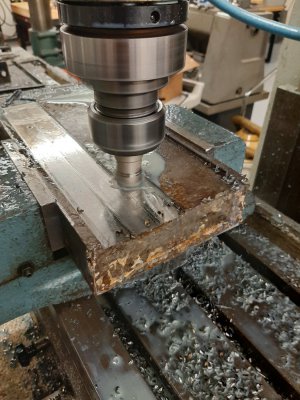- Joined
- Sep 26, 2013
- Messages
- 16
Hi. I've got a 2" face mill with 3 90 degree cutters in it. My setup is a Bridgeport with a 2D cnc. It involves facing a 1.25" x 3" piece of aluminum and then milling about 0.300" down on the edge. (see image)
So, my question. Can I finish facing, drop the Z and then run the edge with the face mill or do I have to switch to an end mill? Obviously using the face mill will significantly increase my cycle time on this one because it's a pain to manually change tools, reset my Z position, etc, but I don't know if I'm going to have massive problems trying to mill an edge with a face mill.

So, my question. Can I finish facing, drop the Z and then run the edge with the face mill or do I have to switch to an end mill? Obviously using the face mill will significantly increase my cycle time on this one because it's a pain to manually change tools, reset my Z position, etc, but I don't know if I'm going to have massive problems trying to mill an edge with a face mill.



